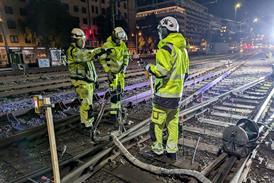Delhi Metro presents driverless train
By Railway Gazette International2016-05-20T09:05:00

INDIA: An official presentation saw the ceremonial flagging off of a test train on Delhi metro Line 7 on May 17 by Minister for Urban Development Venkaiah Naidu and Delhi Chief Minister Arvind Kejriwal. The train travelled from Mukundpur depot at the northern end of the line to Majlis Park ...
Already have an account? LOG IN
To continue…
You’ve reached your limit of content for the month
Get enhanced access to Railway Gazette news and weekly newsletters.

For almost 200 years, the Railway Gazette Group has been the leading provider of news, analysis and intelligence for the international railway industry. Our independent and authoritative content is read by operators, regulators and the supply industry in over 140 countries using a variety of tailored subscription packages.
Site powered by Webvision Cloud



